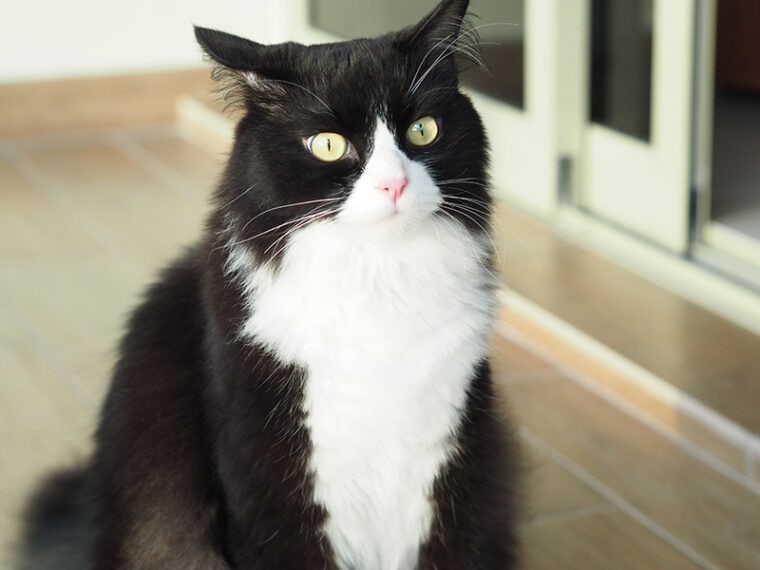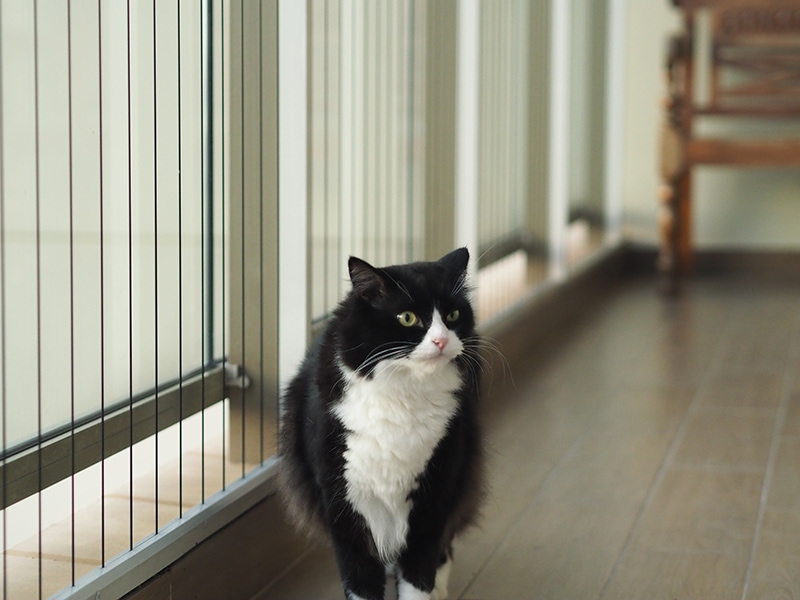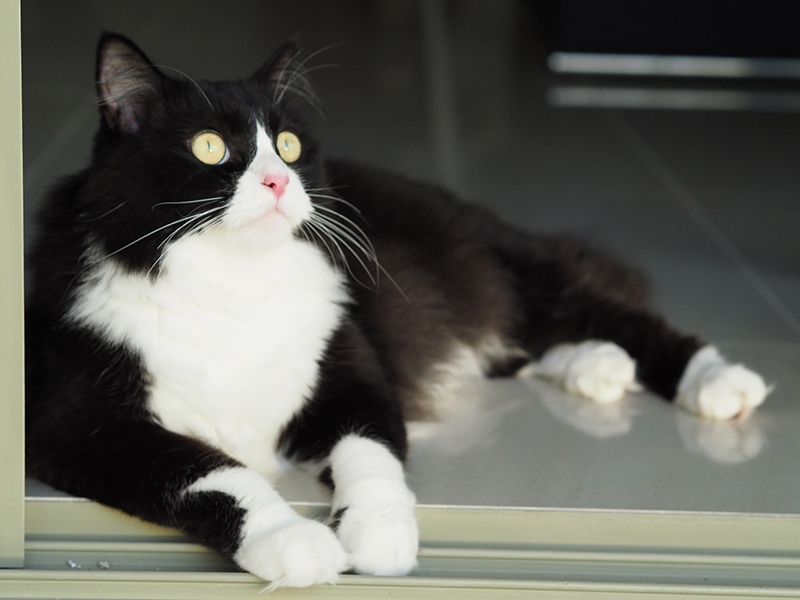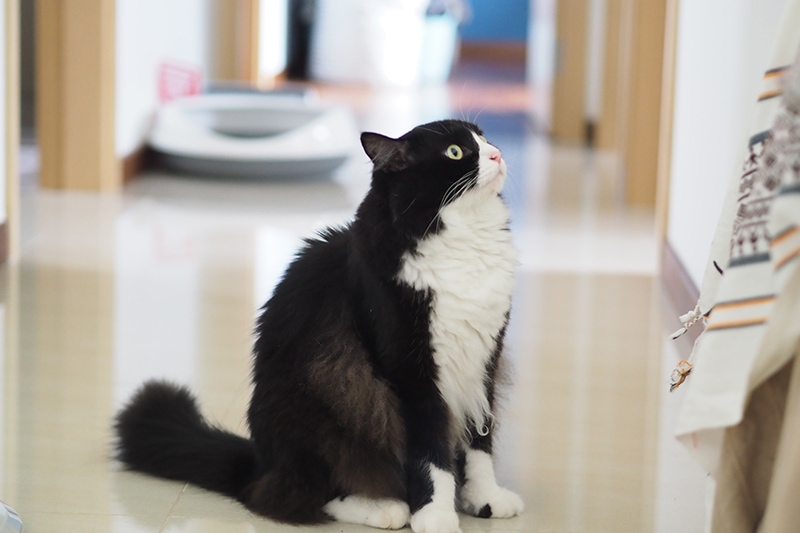
Ragdolls are beautiful cats with gentle, calm, and friendly personalities. Their wonderful disposition makes them one of the most popular cat breeds in the world. But it is not just their character traits that wins cat lovers over; it’s their incredibly stunning appearance.
Ragdolls are seen in many coat colors and patterns, and while ‘tuxedo’ may be a rarer pattern in the breed, it’s not impossible to find tuxedo-wearing Ragdolls. Keep reading to learn more about both tuxedo patterns and Ragdolls.
Breed Overview
Height:
9–11 inches
Weight:
10–20 pounds
Lifespan:
12–15 years
Colors:
Black and white, gray, silver, orange, tortoiseshell
Suitable for:
Families, first-time cat owners, people looking for a lap cat
Temperament:
Docile, gentle, affectionate, intelligent
Tuxedo Ragdoll Breed Characteristics
The Earliest Records of Tuxedo Ragdoll in History
Since “Tuxedo Ragdolls” are not a breed but instead a pattern (tuxedo) found in a breed (Ragdoll), let’s look a little closer at the origins of the pattern and the breed.
Scientists originally attributed the bicolored markings of tuxedo-patterned cats to sluggish genes that moved too slowly to cover the cat’s entire body. Recent research suggests that the white-spotting gene controls the tuxedo’s coloring. As the name suggests, this gene causes white spots to appear, masking the cat’s other fur colors. Tuxedo cats have black coats, but the white-spotting gene hides the black coloring from appearing on certain parts of their bodies.
Cats with tuxedo patterns don’t need two tuxedoed parents to develop their signature coat. If one has the pattern in its gene, it can be passed on to its offspring. More interestingly, tuxedo cats can be born even if neither parent has the markings, as only the black and white genes need to be inherited to produce the tell-tale patterning.
Ragdolls are a relatively new cat breed, originating in California in the early 1960s. The original Ragdolls resulted from breeding a Persian with a long-haired white cat similar in appearance to a Turkish Angora.

How Tuxedo Ragdoll Gained Popularity
Tuxedo patterns have always been popular. Think of some of your favorite cat characters of all time; chances are a handful of them are tuxedos. Felix the Cat, the feline star of the silent era. Sylvester of Looney Toons fame. Tom from “Tom & Jerry”. The Cat in the Hat from Dr. Seuss’s classic book. And, for our Canadian readers, Tuxedo Stan, the cat that founded the Tuxedo Party of Canada and ran for mayor of Halifax in 2012.
According to Nationwide Pet Insurance, Ragdolls are the second most popular cat breed. It’s not just the breed’s beautiful appearance that makes it highly sought after, but its extremely docile personality. Ragdolls are loving and easygoing cats. They earn their name honestly by becoming limp and ragdoll-like when they’re picked up. These large kitties are sometimes referred to as puppy-cats because of how similar they are to dogs.
Formal Recognition of Tuxedo Ragdoll
There is no formal recognition of the Tuxedo Ragdoll as it is not an official breed. You can have a black and white Ragdoll, but it’s not one of the officially recognized Ragdoll variations. In fact, most cat registries will not even recognize a black Ragdoll as they don’t meet the coat standards. In addition, Ragdolls cannot have the tuxedo pattern in their genes unless they’ve been crossed with another cat, rendering them a mixed — and not purebred – breed.
There are only three recognized Ragdoll coat patterns – bicolor (inverted V-mask marking on the face), colorpoint (ears, paws, face, and tail are all colored with the rest of the body being cream), and mitted (paws and chin have white ‘mitts’).
The official standard also states that Ragdolls must have blue eyes to be considered purebred. However, a tuxedo Ragdoll can have blue eyes, but it may also have green or gold eyes.

Top 3 Unique Facts About Tuxedo Ragdolls
1. A tuxedo cat ran for office
As mentioned, a Canadian cat named Tuxedo Stan ran for office in 2012. A group of friends formed the Tuxedo Party of Canada to raise awareness for the increasing feral cat populations in Halifax, Nova Scotia. Though he could not run for office formally, Tuxedo Stan’s campaign gained much attention worldwide. After announcing his candidacy, the black and white cat achieved international acclaim and was endorsed by Ellen DeGeneres and Anderson Cooper. Though his mayoral bid failed, it was still a win as the council donated $40,000 to the SPCA to help open a veterinary clinic to spay and neuter feral cats.
2. Ragdolls are one of the largest domestic cat breeds.
Fully-grown female Ragdolls can weigh up to 15 pounds, while their male counterparts can tip the scales at 20 pounds. They’re not only large when looking at their scale weight, though; Ragdolls have sturdy bones and are very muscular. Females can grow to be as tall as 23 inches, while males can grow to be 26 inches. Even more interesting is that Ragdolls are a slow-to-mature breed, not reaching their full adult size until they’re three or four years old.

3. Tuxedo cats don’t need to be black & white.
While most people think of tuxedo cats as having black-and-white coloring, they don’t have to be. These beautiful coats can come in gray, silver, orange, and even tortoiseshell. And it’s not just Ragdolls that can have tuxedo coats as they can turn up in several other breeds, including Main Coons, American Curls, Munchkins, Persians, Scottish Folds, and Norwegian Forest Cats.
Do Tuxedo Ragdolls Make a Good Pet?
There’s a reason that Ragdolls are one of the most popular purebred cat breeds. They make fantastic family pets as they love to be around humans and can be more affectionate than the average cat. In addition, these gentle giants are highly intelligent, and their docile personalities help them fit perfectly into families with children. Tuxedo Ragdolls will carry the personality traits of a traditional Ragdoll mixed with the sophisticated look of tuxedo cats thanks to their adorable patterning.
Though the breed is fairly hardy, they may be predisposed to certain health conditions such as obesity, hypertrophic cardiomyopathy, urinary tract issues, and hairballs, thanks to their long, luscious coats.
Conclusion
The Tuxedo Ragdoll is a beautiful cat with many fantastic personality traits. They make wonderful family pets and companions, and their bi-color coats are stunning. However, if you’re adopting a Ragdoll with intentions of showing it, you’ll want to choose a cat with a different coat pattern. Unfortunately, no cat registries recognize the tuxedo pattern in Ragdolls.
If you have no plans on attending shows with your kitty, there’s no reason to bypass the tuxedo as one of your coat pattern options.
Related Reads:
- 5 Fascinating Facts About Tuxedo Cats
- Siamese Ragdoll Cat Mix: Pictures, Care Guide, Temperament, & Traits
Featured Image Credit: Liao Zhiwo Henry, Shutterstock






